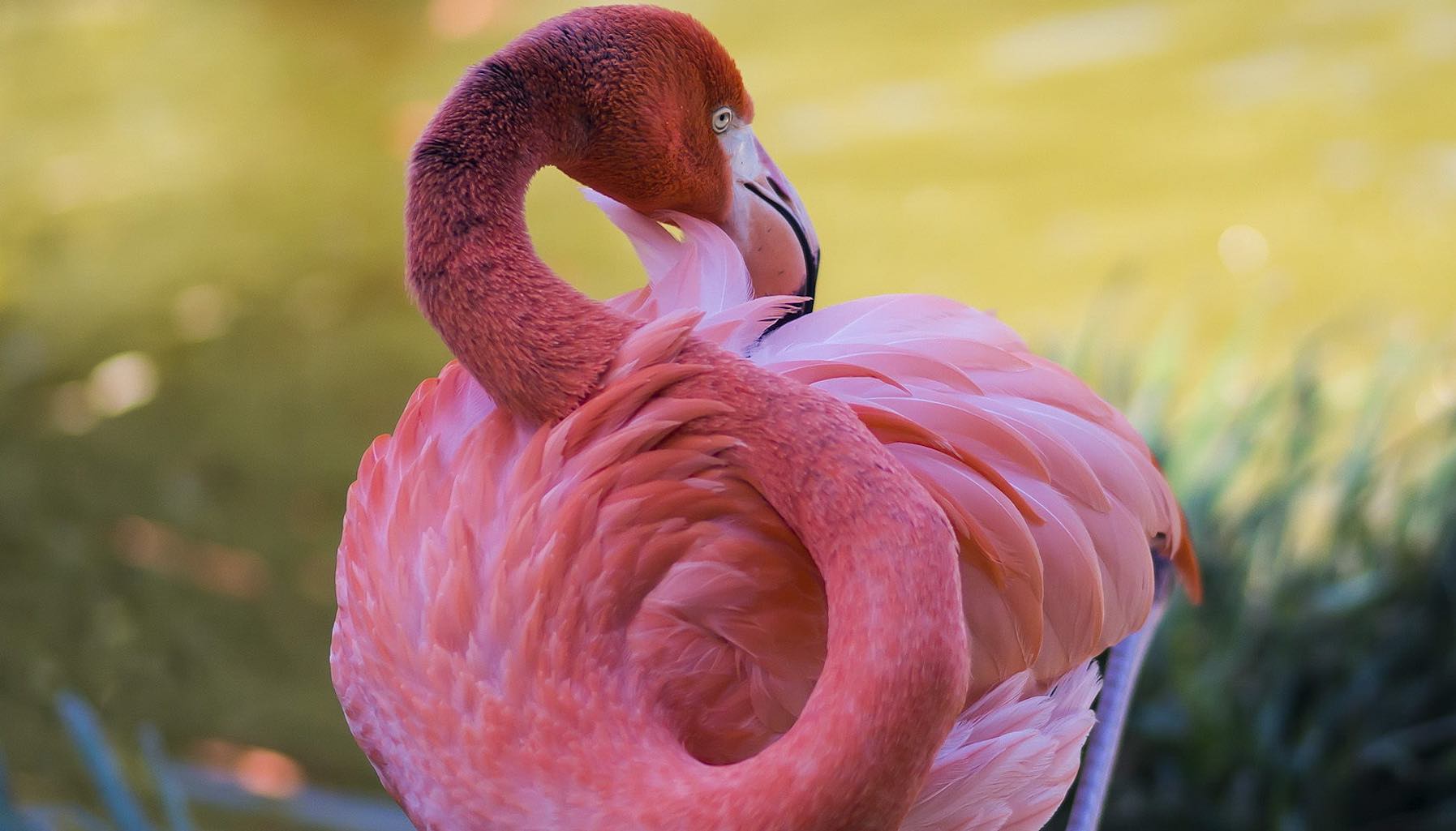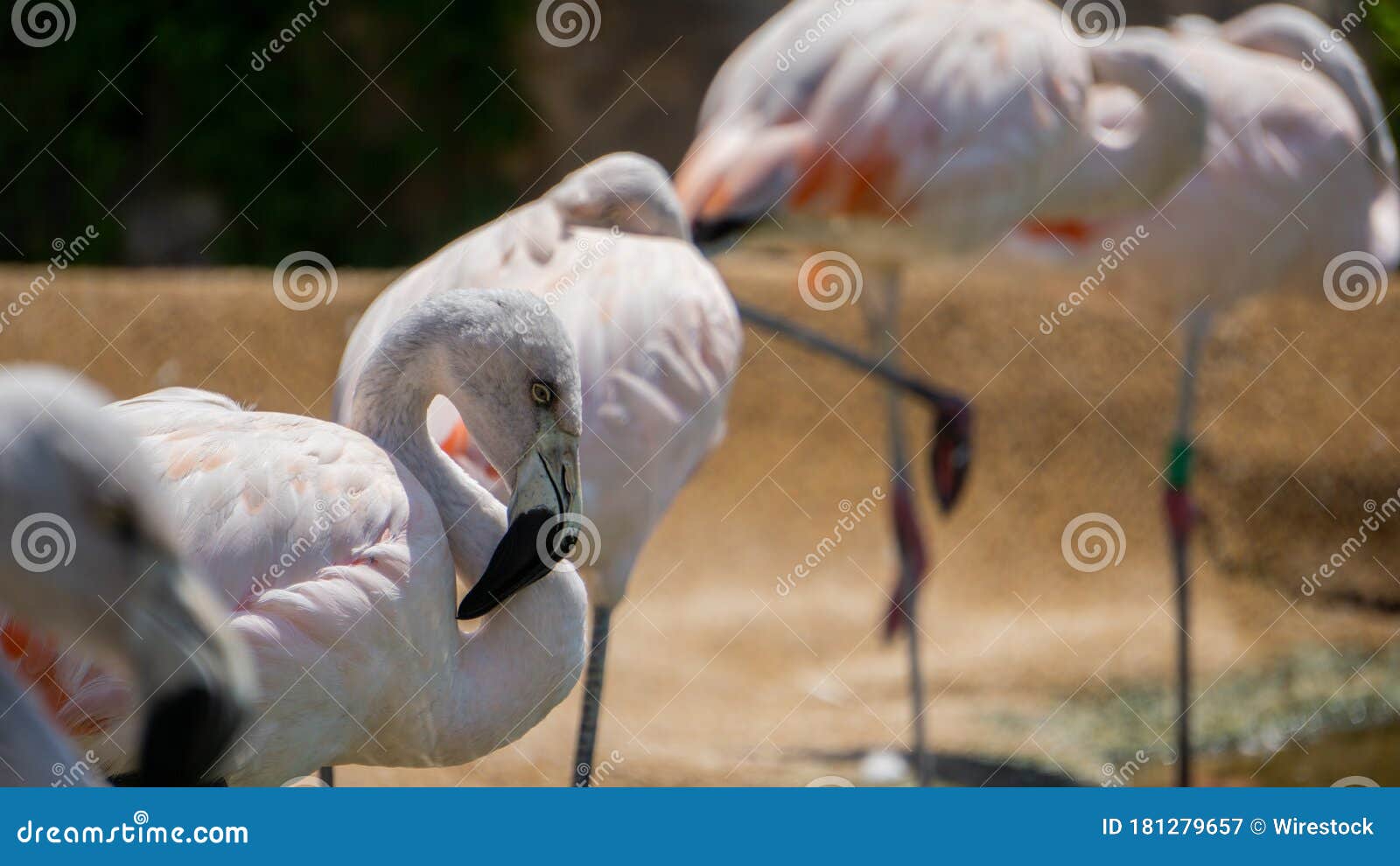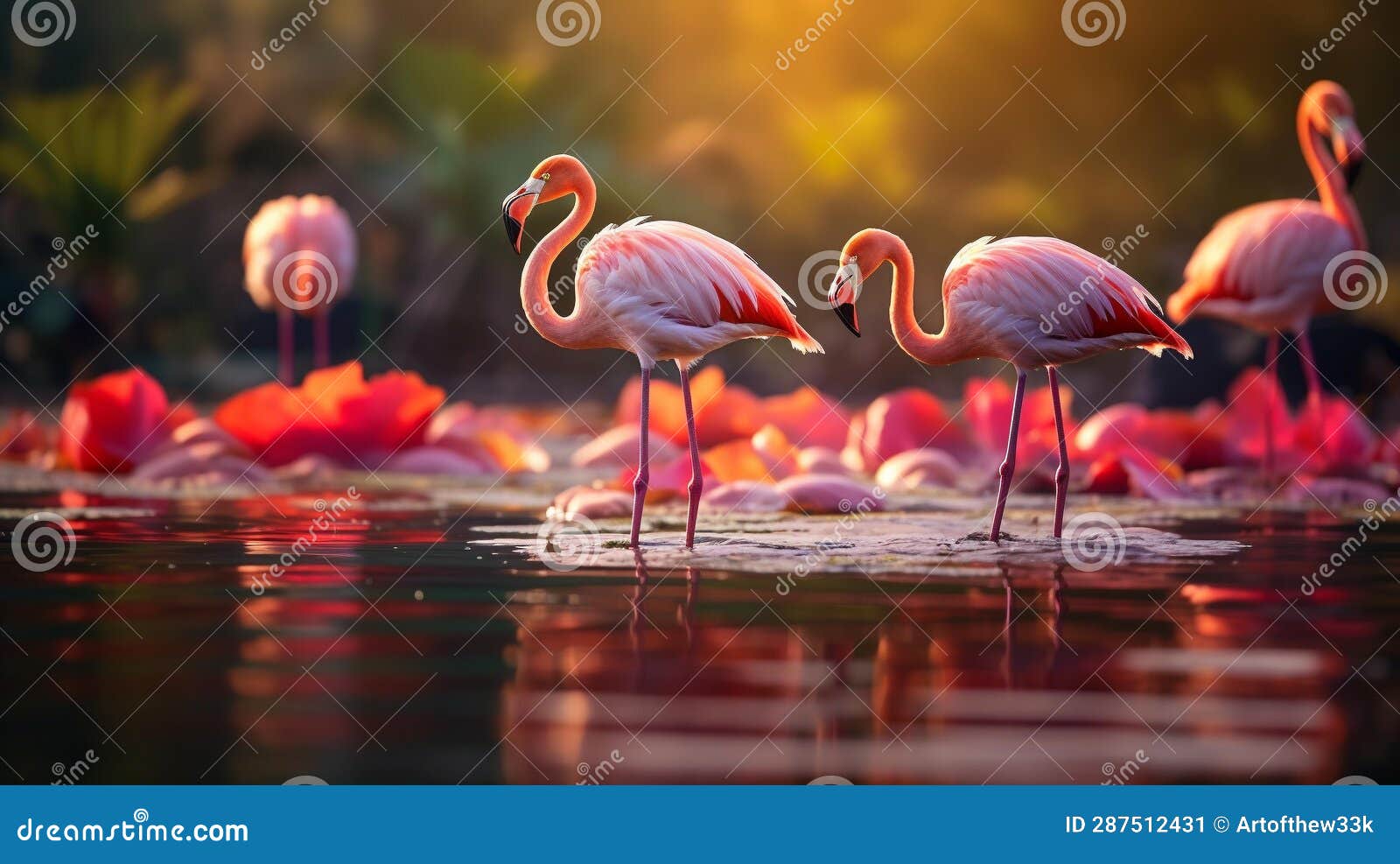When you think about flamingos, what comes to mind? The vibrant pink feathers, the elegant posture, or maybe their quirky one-legged stance? Flamingos are truly nature’s masterpiece, a living artwork that captivates anyone who lays eyes on them. Whether in the wild or at a zoo, these birds exude charm and grace like no other creature. Let’s dive into the mesmerizing world of live flamingos and uncover why they are often called "nature’s grace in motion."
Flamingos are more than just pretty faces; they’re a symbol of beauty, adaptability, and community. These birds have been admired for centuries, from ancient civilizations to modern-day nature enthusiasts. Their striking appearance and unique behaviors make them one of the most fascinating creatures on the planet. But there’s so much more to flamingos than meets the eye.
In this article, we’ll explore everything you need to know about live flamingos, from their natural habitats and feeding habits to their social structures and conservation efforts. So, buckle up and get ready to embark on an unforgettable journey into the world of flamingos!
Read also:Pining For Kim A Deep Dive Into The Phenomenon Thats Got Everyone Talking
Here's a quick overview of what we'll cover:
- Introduction to Flamingos
- Natural Habitats
- Physical Characteristics
- Feeding Habits
- Social Behavior
- Conservation Efforts
- Fun Facts
- Flamingos in Culture
- Threats to Flamingo Populations
- How You Can Help
Introduction to Flamingos
Flamingos are not just any birds; they’re the ultimate showstoppers of the animal kingdom. With their signature pink plumage, long legs, and S-shaped necks, these birds are instantly recognizable. But did you know that flamingos aren’t naturally pink? Their color comes from the food they eat, specifically algae and small crustaceans rich in beta-carotene. Crazy, right?
Flamingos are found in various parts of the world, including Africa, Asia, Europe, and the Americas. They thrive in wetlands, salt lakes, and shallow lagoons, where they can easily access their favorite food sources. Despite their delicate appearance, flamingos are incredibly resilient and can survive in some of the harshest environments on Earth.
Why Are Flamingos So Special?
What sets flamingos apart from other birds is their social behavior. These creatures live in large colonies, sometimes numbering in the thousands. This communal lifestyle helps them stay safe from predators and ensures efficient feeding. Flamingos also have a unique way of eating—they stand on one leg and use their specially adapted beaks to filter food from the water.
Another fascinating fact about flamingos is their ability to adapt to different climates. Whether it’s the scorching heat of the African savannah or the cooler temperatures of South America, flamingos can thrive in diverse environments. This adaptability is one of the reasons they’ve been around for millions of years.
Natural Habitats
Flamingos are truly global citizens, calling various regions home. Their natural habitats range from the alkaline lakes of East Africa to the salt flats of South America. Each region offers unique challenges and opportunities for these birds, shaping their behavior and physical characteristics.
Read also:Securely Connect Raspberry Pi The Ultimate Guide For Tech Enthusiasts
In Africa, flamingos are often seen in places like Lake Nakuru and Lake Bogoria, where the water is rich in algae and other food sources. These lakes are part of the Great Rift Valley, a geological wonder that provides the perfect environment for flamingos to thrive. Similarly, in South America, flamingos inhabit the high-altitude salt flats of the Andes, where they face extreme temperatures and limited oxygen.
Adaptations to Extreme Environments
Living in such diverse environments requires some serious adaptations. Flamingos have evolved over millions of years to cope with the challenges of their habitats. For instance, their long legs allow them to wade through shallow water, while their webbed feet help them maintain balance on muddy surfaces.
Additionally, flamingos have a specialized circulatory system that helps them regulate their body temperature in extreme conditions. This adaptation is crucial for surviving in places like the Andes, where temperatures can drop below freezing at night.
Physical Characteristics
Flamingos are known for their stunning appearance, but there’s more to their looks than just beauty. Their physical characteristics are perfectly suited to their lifestyle and environment. From their long necks to their vibrant feathers, every part of a flamingo’s body has a purpose.
Let’s break it down:
- Feathers: Flamingos’ pink feathers are a result of their diet, which is rich in carotenoids. The more they eat, the brighter their feathers become.
- Beak: Their curved beaks are designed for filter-feeding, allowing them to sift through water and mud to find food.
- Legs: Long, thin legs help flamingos wade through shallow water without sinking into the mud.
- Neck: The S-shaped neck gives flamingos greater flexibility, making it easier for them to reach food and preen their feathers.
Why Do Flamingos Stand on One Leg?
One of the most iconic behaviors of flamingos is standing on one leg. But why do they do it? Scientists believe this stance helps them conserve energy by reducing heat loss through their legs. In addition, standing on one leg may also make it easier for flamingos to balance in windy conditions.
Interestingly, flamingos don’t always stand on one leg. They alternate between legs depending on their mood or the temperature of the water. This behavior is just one of the many quirks that make flamingos so fascinating to watch.
Feeding Habits
Flamingos are filter feeders, meaning they consume small organisms by straining them from the water. Their diet primarily consists of algae, diatoms, and small crustaceans, all of which contribute to their signature pink color. But feeding isn’t as simple as it sounds; flamingos have developed some pretty cool techniques to get their meals.
For starters, flamingos use their beaks to scoop up water and mud, then filter out the food using specialized plates inside their mouths. This process is similar to how baleen whales filter-feed in the ocean. Flamingos also have a unique way of turning their heads upside down to feed, which helps them access food more efficiently.
How Diet Affects Color
The color of a flamingo’s feathers depends on the amount of carotenoids in their diet. In the wild, flamingos get these pigments from algae and crustaceans, but in captivity, they may need supplements to maintain their bright pink hue. Some zoos even add shrimp or spirulina to their diets to ensure their flamingos stay colorful.
Interestingly, the intensity of a flamingo’s color can also indicate its health and fitness. Brighter feathers are often a sign of a well-nourished bird, making them more attractive to potential mates.
Social Behavior
Flamingos are highly social creatures, living in large colonies that can number in the thousands. This communal lifestyle offers several advantages, including increased safety from predators and better feeding efficiency. But it also means that flamingos have developed complex social behaviors to maintain harmony within their groups.
One of the most fascinating aspects of flamingo social behavior is their courtship displays. During breeding season, flamingos engage in synchronized dances, wing-spreading, and head-flagging to attract mates. These displays are not only beautiful to watch but also crucial for the survival of the species.
Flamingo Communication
Flamingos communicate with each other through a variety of vocalizations and body movements. They use honking sounds to stay in touch with their flock, especially during flight. Flamingos also perform specific behaviors, such as head-flagging and wing-spreading, to signal their intentions to other birds.
Interestingly, flamingos can recognize their own chicks’ calls from a distance, even in a noisy colony. This ability helps parents locate their offspring and ensure their safety.
Conservation Efforts
Despite their adaptability, flamingos face numerous threats in the wild. Habitat loss, climate change, and human activities are putting pressure on flamingo populations worldwide. Fortunately, conservation efforts are underway to protect these magnificent birds and their habitats.
Organizations like the International Union for Conservation of Nature (IUCN) and the Wildlife Conservation Society (WCS) are working to preserve flamingo habitats and promote sustainable practices. These efforts include protecting wetlands, monitoring population trends, and raising awareness about the importance of conservation.
How You Can Help
You don’t have to be a scientist or conservationist to make a difference for flamingos. Simple actions like reducing plastic waste, supporting eco-friendly tourism, and spreading awareness about conservation can have a big impact. By taking these steps, you can help ensure that future generations can enjoy the beauty of flamingos in the wild.
Fun Facts About Flamingos
Here are some cool facts about flamingos that you might not know:
- Flamingos can live up to 50 years in the wild and even longer in captivity.
- They are one of the oldest bird species, with fossils dating back over 30 million years.
- Flamingos can fly at speeds of up to 35 miles per hour and cover long distances during migration.
- They are monogamous birds, often staying with the same mate for life.
Did You Know?
Flamingos are not only beautiful but also incredibly smart. Studies have shown that they can recognize themselves in mirrors and use tools to solve problems. This intelligence makes them even more fascinating to study and admire.
Flamingos in Culture
Flamingos have played a significant role in human culture for centuries. From ancient Egyptian hieroglyphs to modern-day art, these birds have inspired countless works of creativity. In some cultures, flamingos are seen as symbols of beauty, grace, and renewal.
Today, flamingos are often associated with fun and relaxation, thanks to their colorful appearance and playful nature. They’ve become a popular motif in fashion, home decor, and even advertising. But beyond their aesthetic appeal, flamingos remind us of the importance of preserving nature’s wonders for future generations.
Threats to Flamingo Populations
While flamingos are resilient creatures, they face numerous threats in the wild. Habitat destruction, pollution, and climate change are among the biggest challenges they encounter. In addition, human activities such as mining and agriculture can disrupt their natural habitats, making it harder for them to survive.
Climate change is also affecting flamingo populations by altering the availability of food and water. Rising temperatures and changing rainfall patterns can lead to the drying up of wetlands, forcing flamingos to travel longer distances to find food and nesting sites.
What’s Being Done?
Conservationists are working hard to address these threats through research, advocacy, and community engagement. By protecting key habitats and promoting sustainable practices, they hope to ensure that flamingos continue to thrive in the wild. But the success of these efforts depends on the support and cooperation of people around the world.
How You Can Help
If you want to make a difference for flamingos, there are plenty of ways to get involved. You can support conservation organizations, participate in citizen science projects, or simply spread the word about the importance of protecting these amazing birds. Every little bit helps!
Here are some ideas to get you started:
- Reduce your carbon footprint by driving less and using energy-efficient appliances.
- Support eco-friendly tourism and avoid activities that harm wildlife.
- Donate to organizations working to protect flamingo habitats and promote conservation.
Join the Movement
By taking action today, you can help ensure that future generations have the chance to experience the mesmerizing world of live flamingos. Together, we can make a difference and preserve nature’s grace in motion for years to come.
Kesimpulan
The world of live flamingos is truly mesmerizing, filled with beauty, mystery, and wonder. From their vibrant plumage to their unique behaviors, these birds offer a glimpse into the incredible diversity of life on Earth. By learning more about flamingos and supporting conservation efforts, we can help protect these amazing creatures and their habitats.
So, what are you waiting for? Dive into the world of flamingos and discover the magic for yourself. Share this article with your friends, leave a comment below, and let us know what you think. Together, we can make a difference and ensure that flamingos continue to grace our planet with their presence.


